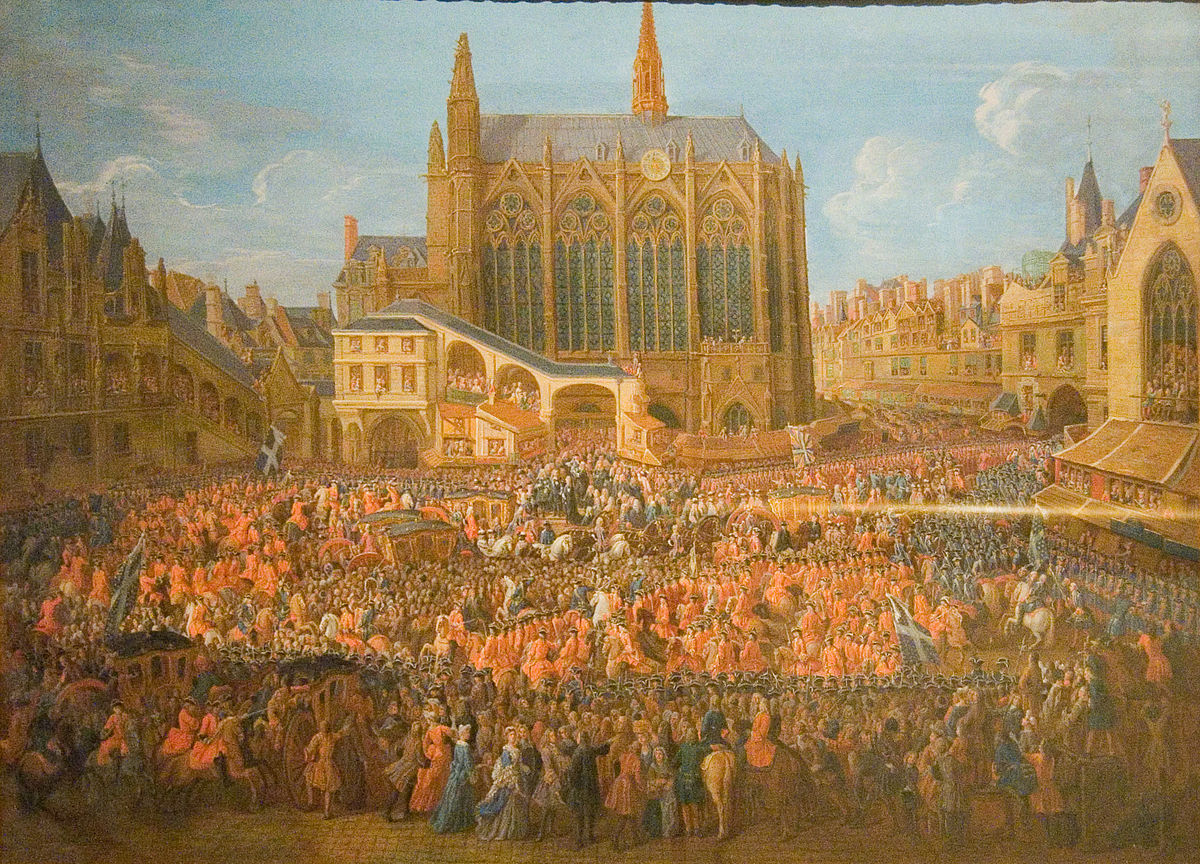
Paris under Louis XV
Paris, FranceLouis XIV died on 1 September 1715. His nephew, Philippe d'Orléans, the regent for the five-year-old King Louis XV, moved the royal residence and government back to Paris, where it remained for seven years. The king lived in the Tuileries Palace, while the regent lived in his family's luxurious Parisian residence, the Palais-Royal (the former Palais-Cardinal of Cardinal Richelieu). He made one important contribution to Paris intellectual life. In 1719, he moved the Royal library to the Hôtel de Nevers near the Palais-Royal, where it eventually became part of the Bibliothèque nationale de France (National Library of France). On 15 June 1722, distrustful of the turbulence in Paris, the regent moved the court back to Versailles. Afterwards, Louis XV visited the city only on special occasions.
One of the major building projects in Paris of Louis XV and his successor, Louis XVI, was the new church of Sainte Geneviève on top of the Montagne Sainte-Geneviève on the Left Bank, the future Panthéon. The plans were approved by the king in 1757 and work continued until the French Revolution. Louis XV also built an elegant new military school, the École Militaire (1773), a new medical school, the École de Chirurgie (1775), and a new mint, the Hôtel des Monnaies (1768), all on the Left Bank.
Under Louis XV, the city expanded westward. A new boulevard, the Champs-Élysées, was laid out from the Tuileries Garden to the Rond-Point on the Butte (now the Place de l'Étoile) and then to the Seine to create a straight line of avenues and monuments known as Paris historical axis. At the beginning of the boulevard, between the Cours-la-Reine and the Tuileries gardens, a large square was created between 1766 and 1775, with an equestrian statue of Louis XV in the center. It was first called "Place Louis XV", then the "Place de la Révolution" after 10 August 1792, and finally the Place de la Concorde in 1795 at the time of the Directoire.
Between 1640 and 1789, Paris grew in population from 400,000 to 600,000. It was no longer the largest city in Europe; London passed it in population in about 1700, but it was still growing at a rapid rate, due largely to migration from the Paris basin and from the north and east of France. The center of the city became more and more crowded; building lots became smaller and buildings taller, up to four, five and even six stories. In 1784, the height of buildings was finally limited to nine toises, or about eighteen meters.
